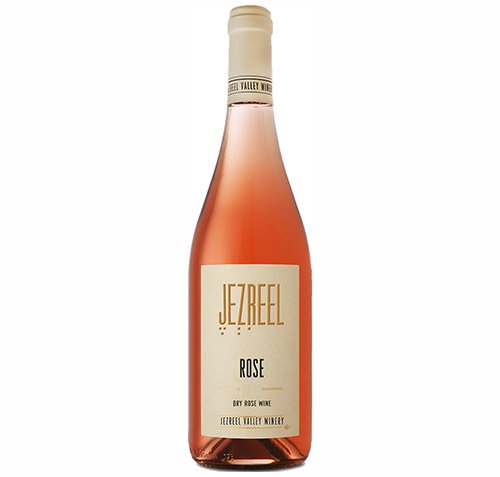






This past week, many of the judges who tasted and ranked wine for The Jewish Link Wine Guide got back together, with a few other enthusiasts, in a Teaneck backyard to taste 31 rosé wines made in 2020. We tasted as many of the kosher pinks on the market we could reasonably find, but we also wanted to try the labels that had been considered the best of 2019, namely Cantina Guiliano, Dalton, Netofa, Bat Shlomo and Château Roubine.
We decided, however, that to best judge the 2020 wines on their own merits and not our preconceived year-old ideas, the bottles would, in typical-Wine Guide style, be covered in brown paper to ensure equal treatment.
One of the reasons pink wines differ from year to year is likely because many, if not all winemakers now feel they must provide a rosé to round out their offerings, even if it’s not the focus of their work or if they have felt inspired to make one before. In past decades, rosé was often made from whatever juice was lying around, often as an afterthought after harvest, and was not as trendy or particularly sought-after by the consumer. It was a specialty, of course, of some winemakers, particularly in France.
As many wines tend to vary widely based on the weather and the growth quality of the grapes in a given year, the winemakers tend to vary the percentage of grapes added to create their annual rosé blend. What was once a rarity among kosher wineries is now presented as virtually every winemaker’s distinct version of a rosé, from among many different grape varieties and winemaking styles.
The results of the blind tasting were fascinating. We are still crunching the numbers and may include a small survey of 2020 rosé rankings as part of next year’s pre-Pesach magazine, but as rosés are designed to be drunk young, here we will provide our favorites from this group, to assist with Shabbat wine recommendations as spring turns to summer.
Interestingly, virtually none of the wines in the very top spots last year were the same this year; a new group of very good (and differently styled) rosés rose to the top. What’s strange is that most of us tend to like dry wines, and we somehow expected that the many provençal-style (restrained, dry with lots of bracing acidity) offerings we tried would take the top spots. We are as surprised as you are at our 2020 all-stars.
All these pink wines we tasted are perfect for kiddush outside, and for enjoyment with light foods as the weather gets warmer.
The top wine of our tasting, by all accounts, was the Or Haganuz Amuka Rosé 2020. The nose was all citrus and tropical fruit, like guava, lychee and passionfruit, perhaps with a hint of stone fruit like peach, with a smooth, floral finish. The scent of this wine was likely the most distinctive of our tasting. The wine is a one-quarter-each blend of cabernet franc, merlot, shiraz and mourvèdre, from vineyards located in the northern Galilee. It was very balanced, with just enough acidity to counteract the fruity nose. We can’t imagine anyone being disappointed with a bottle of this extremely aromatic and pleasing wine.
Also in a shared top spot was the Jezreel Valley Rosé 2020. Both this and the Or Haganuz are of a slightly deeper and darker rose color and definitely not the pale, restrained salmon that characterizes the provençal rosés. The Jezreel Valley was one of the darkest in our tasting and elicited many comments around the table for its beautiful, almost fuschia color and lovely aroma. Quite a few of the tasters clamored to take this one home at the end of the evening. This wine is a blend of 60% syrah, 30% carignan, and 10% sauvignon blanc. The result is very pleasantly fruity and floral on the nose, with more tropical and stone fruit flavors toward the finish.
In the same tradition as the above two, it seems darker-complected rosés did very well for us this season. While it was not unanimous like with the other two, at least half of us genuinely jostled to take home the Binah Rosé 2020, a blend of chambourcin, cabernet franc and merlot. This Allentown, Pennsylvania all-kosher winery, with the grapes for rosé sourced from right here in New Jersey, created a deep and fruity wine with round, sweet floral notes and a fruit-punchy feel. It tastes young and fun, as rosés should taste, and is enjoyable and light. This wine is available generally only through online order, from Binah’s website or on kosherwine.com.
The Bat Shlomo Rosé 2020, which appeared in our favorites list last year, is just one of two to be included for the second year in a row. Like last year, this 100% grenache shows pleasant citrus and strawberry notes, with lightness and restrained acidity. And the Dalton Estate Rosé 2020, along with the Dalton Alma Rosé 2020, were both pleasant and enjoyable, though perhaps not as fully aromatic as 2019. The Estate 2020 is a blend of shiraz, cabernet sauvignon and barbera and has a lightly fruity and flowery nose, perhaps of strawberry and blossom. The Alma Rosé 2020, formerly known as the Coral Rosé, is a really nice and easy-drinking blend of 50% grenache noir and 50% pinot gris.
Finally, we wanted to include the superior wine that we recognized in the Shiloh Rosé 2020. While this wine had a tropical or red berry nose—it had a bit less going on in the aroma than, say, the Or Haganuz or Jezreel Valley—it tasted gorgeously fruity and had a well-constructed, winemaker-influenced feel to it. It was extremely balanced and a full experience from nose to finish. This blend of 65% cabernet franc, 25% grenache and 10% barbera yielded a lovely shade of coral and was sweeter and significantly less acidic than Shiloh’s offerings in previous years.
By Elizabeth Kratz










